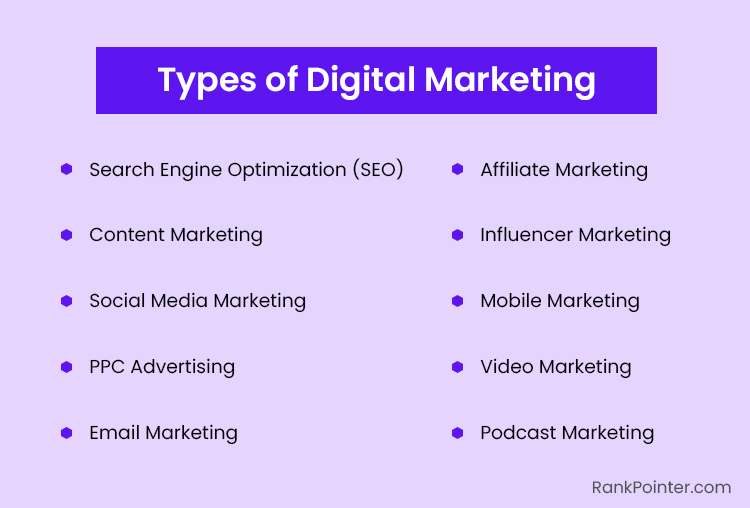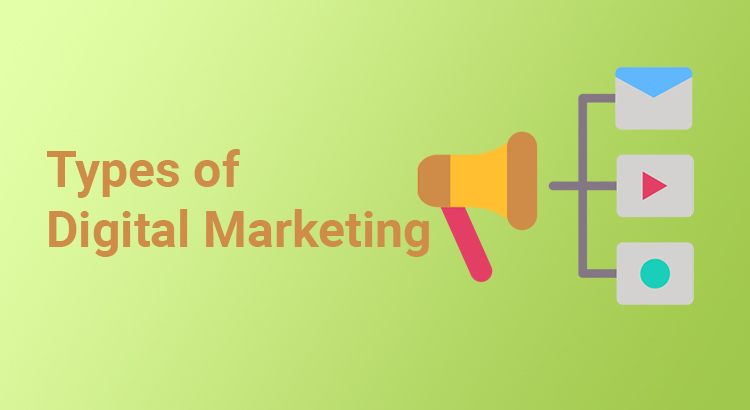Digital Marketing has evolved into a fundamental component of any successful business strategy. There are many types of digital marketing available out there. But we are going to look at the top 10 types of digital marketing. Whether you’re new to the digital sphere or seeking to enhance your expertise, this comprehensive guide is tailored to serve as an invaluable resource.
Top 10 Types of Digital Marketing
Take a look at the list of the top 10 digital marketing types are given below.
1. SEO (Search Engine Optimization)
SEO ensures your content ranks high on search engines, making it easily discoverable by your target audience.
By incorporating relevant keywords into your content, you can attract organic traffic, essential for gaining visibility and credibility in the online realm.
2. Content Marketing
Content Marketing establishes your brand as an authority by providing valuable information to consumers.
Through various channels and formats such as blogs, social media, and videos, it addresses consumer needs at different stages of the buyer journey, ultimately driving conversions and fostering customer loyalty.
3. SMM (Social Media Marketing)
Social media marketing harnesses the power of social media platforms to promote brands, products, or content.
Whether through organic posts or paid advertisements, leveraging social media enables brands to engage with their target audience directly. This fosters interaction and brand validation through shares and comments.
4. PPC (Pay-Per-Click) Advertising
PPC advertising involves advertisers paying for each user click on their ads. This form of online marketing is prevalent on search engines like Google Ads, where advertisers bid on keywords for top placement on SERPs.
Additionally, PPC extends to social media platforms like Facebook and Instagram and display advertising on websites.
5. Email Marketing
Despite misconceptions about its efficacy, email marketing remains one of the most potent digital marketing tools.
By delivering timely and relevant content to subscribers, brands can nurture leads and guide them through the marketing funnel. Ultimately, this drives conversions and fosters customer loyalty.
6. Affiliate Marketing
Affiliate marketing involves collaborating with content creators who promote products or services in exchange for a commission on sales generated through their referrals.
This collaborative approach enables brands to tap into existing audiences and expand their reach without the need for a substantial marketing budget.
7. Influencer Marketing
Influencer marketing capitalizes on the credibility and reach of digital influencers to endorse products or services.
By partnering with influencers aligned with their brand values, businesses can effectively reach and engage with target demographics. This leverages influencer loyalty to drive brand advocacy.
8. Mobile Marketing
With the proliferation of smartphones and mobile devices, mobile marketing has become indispensable for brands seeking to engage with consumers on the go.
From mobile apps to geolocation-based targeting, mobile marketing offers myriad opportunities to connect with audiences in real-time.
9. Video Marketing
Video marketing has emerged as a dominant force in digital advertising, with platforms like YouTube attracting billions of users each month.
By leveraging video content, brands can captivate audiences, convey complex messages, and drive conversions throughout the marketing funnel.
10. Podcast Marketing
Podcasts have surged in popularity, offering brands a unique opportunity to engage audiences through audio content.
By aligning podcast topics with audience interests and activities, brands can seamlessly integrate product or service promotions into the podcast narrative. This enhances engagement and drives conversions.

Conclusion of Digital Marketing Types
Understanding the various types of digital marketing is useful for businesses to succeed in a competitive market. By harnessing the power of these digital marketing types, brands can effectively engage with audiences, drive conversions, and achieve sustainable growth.


